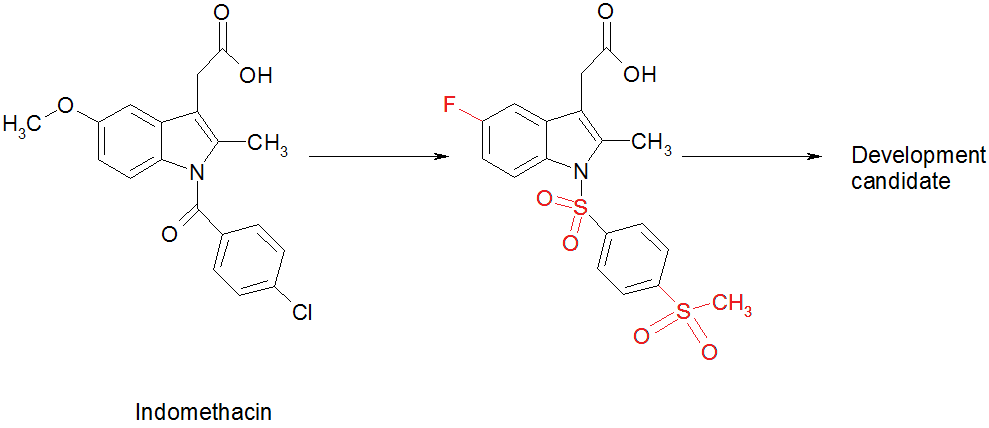Step 5. Lead Optimisation
Modifications of the molecule to improve its effect. The screening process identifies ‘leads’ - molecules which interact with the target. However, these molecules often have only a weak effect and would not be suitable for further development.
- Chemists alter the selected ‘lead’ molecule by adding or deleting elements. This creates a range of slightly different molecules.
- The molecule of an existing medicine could also be modified to improve or change its effect.
Computer technology can help to design these molecules.
These modified molecules will be further tested to help gain an understanding of the pharmacology of the molecule, meaning the way the molecule works in the body. The molecules with better efficacy and tolerability (safety) can then proceed for further testing as ‘candidate compounds’. Around this stage, the scientific and technical information about the candidate compound, such as its molecular structure and effects, is usually registered, or patented, to protect the researcher’s (or company’s) intellectual property.

Figure 5. Optimisation of indomethacin to a potent CRTH2 antagonist. The original molecule on the left (called indomethacin), has been chemically altered (changes shown in red) to turn it into a candidate compound for a development project.
At each stage in the development process, the
results from a series of experiments are reviewed and a decision has to be made
whether or not to proceed. A ‘go’ decision means that further investments will
be made to fund the next set of experiments. If the information does not
support further work, a ‘no-go’ decision is made, and the project will be
stopped.
Summary: A “candidate compound” emerges only once the
potential targets have been selected and the best lead compound has been
identified. This discovery work will have:
- Taken 4.5 years, on average;
- Involved testing a high number of molecules (5,000 to 10,000, or more for small molecules) and
- Cost €500 million, on average.